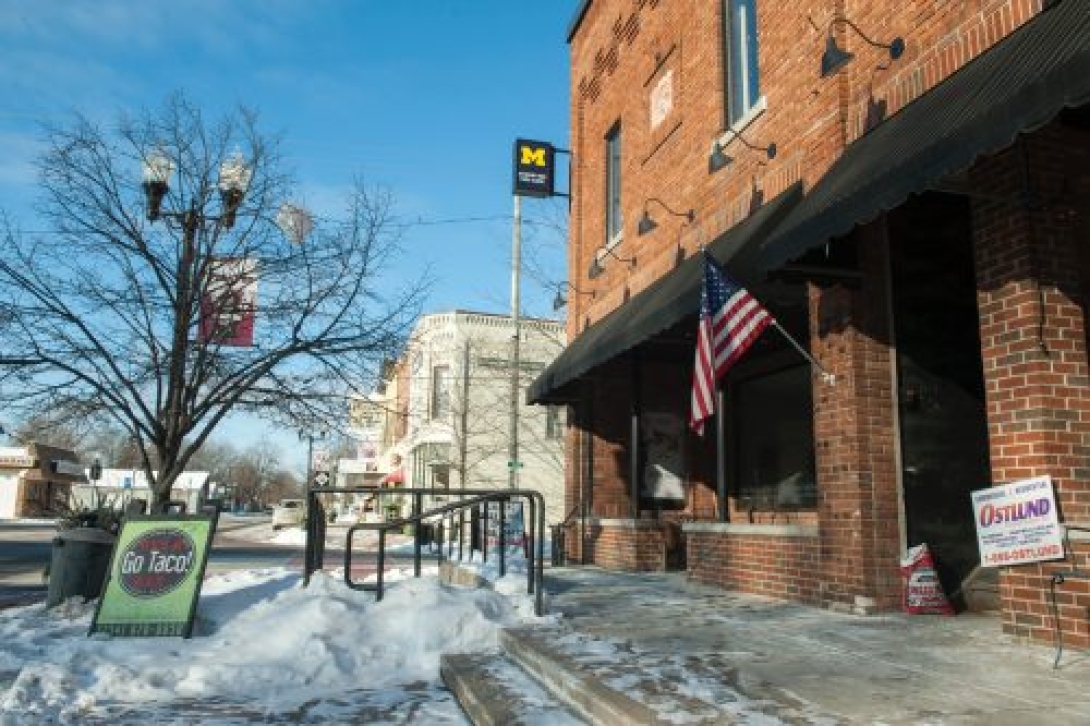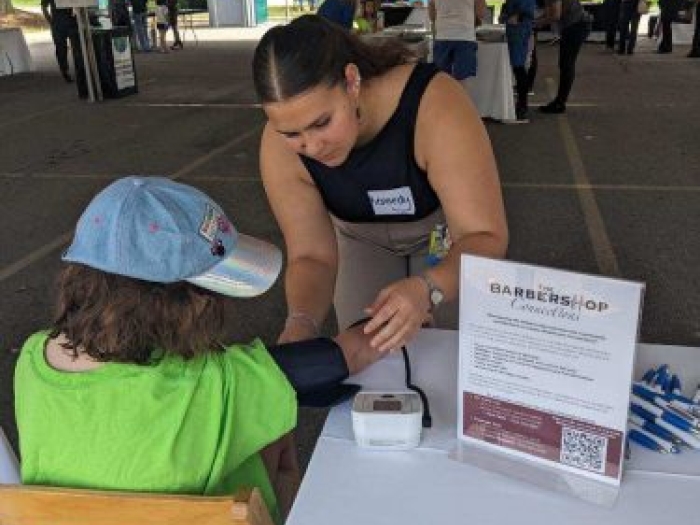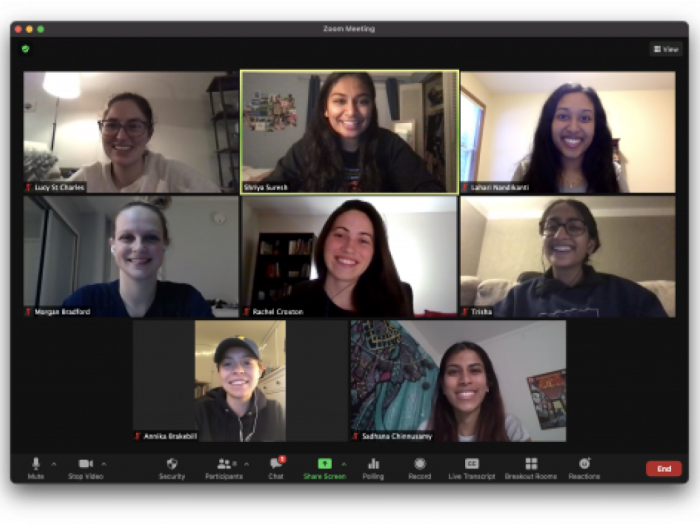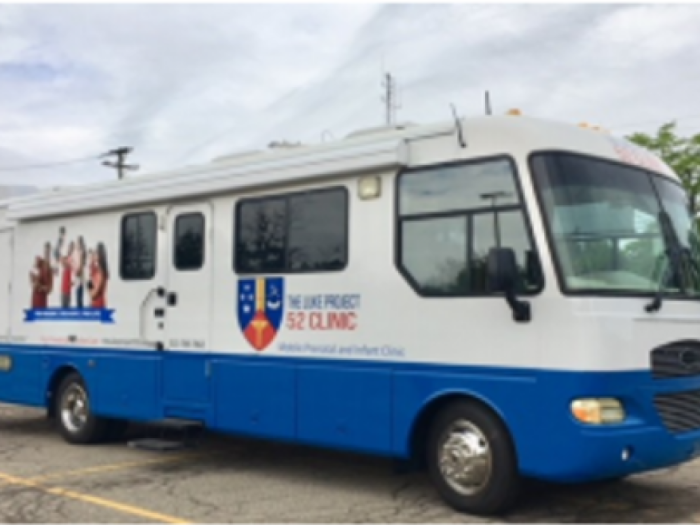9:41 PM
Author |
My first volunteer shift at the University of Michigan Student Run Free Clinic (UMSRFC) took place at the beginning of September. At that point I had only been in medical school for a couple months and had just begun learning basic clinical skills like how to take a patient history. While nervous at the thought of interviewing a real patient instead of an actor (we often have actors called Standardized Patients play the role of patients in class for practice), I was excited to try to apply what I'd learned in the Doctoring course to an actual patient experience.
I absolutely stumbled through my first couple patient encounters. I fumbled to find the right words, unsure of what follow-up and clarifying information to request when my medical knowledge was so limited. I performed a physical exam alongside a fourth-year medical student, who guided me through where to put my stethoscope and which parts of the patient's chest I should listen to. When she asked me if I heard anything abnormal, I said no. Truthfully, though, I couldn't hear anything. I only realized when I got home that I'd been using the wrong side of my stethoscope!
The UMSRFC is an organization that's dedicated to providing quality health care at no charge to uninsured residents of Livingston, Washtenaw, and Oakland counties. It is run by a leadership team composed of students from the U-M Medical School, School of Nursing, School of Pharmacy, School of Social Work and School of Public Health. Throughout the pandemic, the clinic has been able to remain open and has continued servicing patients, with 635 total visits in 2021. [Learn more about supporting the UMSRFC at this link or below!]
Because of how insecure I felt about my own skills that first day at the clinic, I was really blown away by the other student volunteers. It seemed incredible to me that in three short years I would have the knowledge needed to ask the right questions, to confidently examine a patient and judge whether they needed further care. If anything, volunteering in the clinic really made me aware of how much I still didn't know, and how much I would soon learn. That day I took my first patient history, I learned how to write up a patient visit, I presented an oral history to an attending physician for the first time, and I got just a brief insight into the incredible organization, dedication and effort that goes into running the clinic.
I also had the privilege of volunteering at the clinic on an "interprofessional education" day, so rather than just medical students volunteering, the clinic was also staffed by both nursing and social work students. Together, we were able to provide pretty complete services for patients who came in. Through phone translator services I could ask questions to a patient who only spoke Spanish, through the new dermatology e-consult service we were able to set up a patient for a specialist appointment to further examine an irregular mole, and, most surprising to me, we were even able to provide a diabetic patient with free insulin, which he could not afford himself.
Why the UMSRFC Matters to Me I came into medical school knowing that I wanted to become involved with the UMSRFC. Throughout my entire admittance process, during interviews, Q&As with current students, and searches through existing organizations at the school, the UMSRFC constantly came up. Since you do not have to be a member of the leadership team to volunteer with the clinic, many students get involved with the SRFC to gain more practical pre-clinical experience taking histories and performing physical exams before starting rotations in the hospital during the second year of medical school. What's nice about the clinic is that it provides a very low-stress environment in which students can practice the skills they've been learning. As nervous as I was during my first shift at the clinic, I was certain that the older students and the trained physicians volunteering would help guide me. No one made me feel dumb when I couldn't remember what a medication did or didn't know the correct "SOAP" format used when presenting to an attending; instead, they supported and guided me through the unfamiliar terminology.
Having the opportunity to participate in patient interactions so early on in medical school is certainly a compelling reason to join the clinic, but I was most drawn to the interpersonal aspect of work with the UMSRFC, the opportunity to become more involved in the greater Pinckney community that I would a part of for the next four years. This was driven by my personal interest in public health and desire to make connections within the community that could help inspire or influence any future pursuits in this area. And so, I applied for and was selected as the Community Outreach Coordinator for the UMSRFC.
As Community Outreach Coordinator, I'm primarily responsible for running social media pages, finding volunteer opportunities for medical students at community events where they can provide medical services and promote the clinic, and serving as a liaison between community organizations and the UMSRFC. I've met community members, organized events, and had the opportunity to learn to balance school and personal responsibilities with those of the clinic.
As students, we are also required to complete a Capstone project by the end of our fourth year. One way that many students choose to complete this requirement is by joining a Path of Excellence and completing their project under guided mentorship of physicians/professionals with similar interests. I recently joined the Ethics Path of Excellence and hope to draw from relationships and observations made through work with members of the greater community when developing my research project.
What's really great about the clinic is that because it is student-run, there is a lot of space for creativity and the cultivation of new ideas. There is so much flexibility for people to begin personal projects aimed at improving the clinic and expanding access to care; the experience really becomes what you make of it. Because truly, the clinic could not run without the volunteer services of undergraduate students, graduate students, and various board-certified clinical providers. In 2021, the clinic was kept running by 3600+ volunteer hours in and out of the physical clinic space.
Support is Critical to the UMSRFC's Success While volunteers provide services in the clinic, we also really rely on institutional funding, grants and individual donations from generous supporters and donors to remain effective and to be able to continue improving our quality of care. Among other efforts, this year the social work team partnered with the Gleaners Community Food Bank to provide emergency food boxes to patients experiencing food insecurity, a dermatology e-consult service was started to increase access to highly critical specialized service, and we were able to increase the number of vaccines stored at and distributed at the clinic. The pandemic has also created new needs to keep both volunteers and patients safe, such as face masks, goggles, hand sanitizer and the expansion of our virtual services.
Giving BlueDay is a University-wide day of giving that encourages supporters to donate to the U-M programs that are meaningful to them, and donations collected during Giving Blue Day (and on any day of the year!) are crucial in allowing us to continue expanding our services. Last year, UMSRFC was fortunate enough to raise more than $20,000 to help expand our services and sustain the clinic mission.
I want to thank all past donors and invite individuals to share our Giving BlueDay page and keep the clinic in mind when considering what organizations to donate to this year!

University of Michigan Medical School





